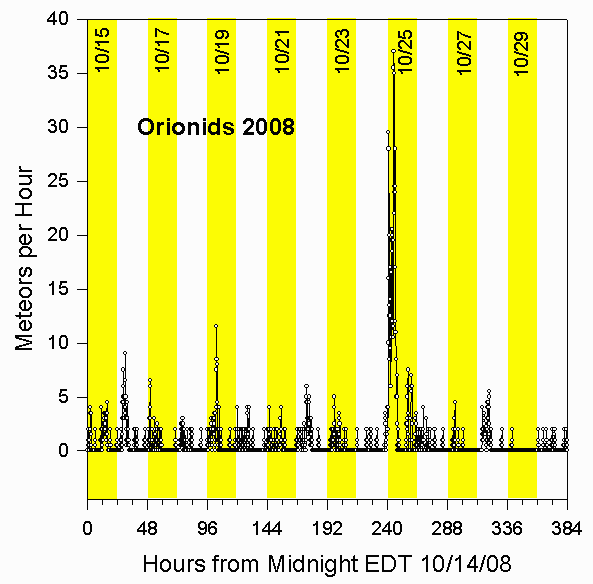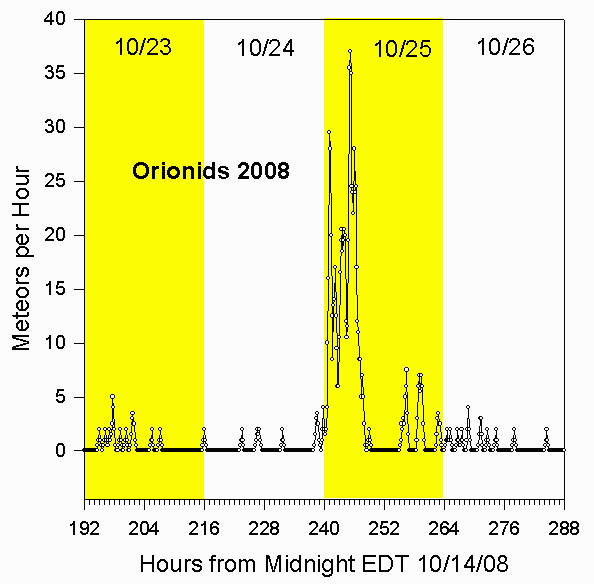
Radio Observation of the 2008 Orionids
Data Collection and Analysis
For details about our equipment and method of data analysis, see our main page. The peak counting rate of about 35 meteors per hour occurred near 5:00 AM EDT on October 25, 2008. The peak occurred several days after the predicted maximum. The meteors of this shower are from Halley's Comet.
In the following summary graph, we've counted meteors in ten minute intervals, and then applied a data smoothing equation of the form
Smoothed_Rate(t) = 4*[((1/2)*N(t))+((1/4)*(N(t+1))+((1/4)*(N(t-1))+((1/8)*(N(t+2))+((1/8)*(N(t-2))]
where N(t) is the number of meteors in the ten minute interval t, N(t-1)is the number of meteors in the preceding ten minute interval, and so on.
Rates for 2008 Orionids
The following graph shows the meteor count rates per hour we measured for the 2008 Orionids. These rates were determined by a computer program that counted all peaks that climbed at least 20% above the background level in one second. The graph shows the rates observed for the sixteen day interval starting at Midnight EDT on 10/14/07. Visual observations by many observers found a broad peak centered around October 21, 2008.

The following graph is an expanded view of the meteor counts from October 23, 2008, through October 26, 2008. This outburst was noted by other observers.

Summary
The 2008 Orionid meteor shower showed an unexpected outburst of about 35 meteors per hour near 5:00 AM EDT on October 25, 2008. This was several days after the predicted maximum.
Return to main page
Comments and technical questions can be addressed to Dev Gualtieri at Honeywell Laboratory, Morristown, NJ.